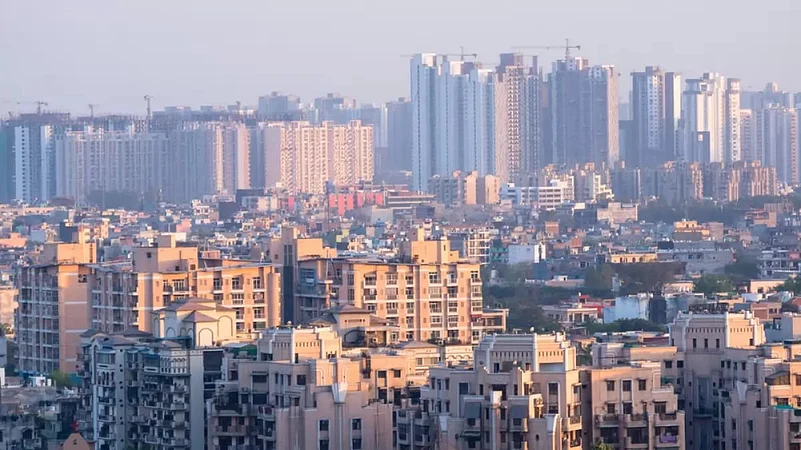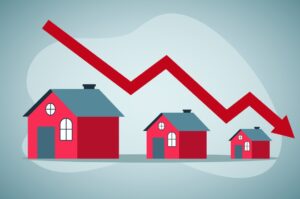Home Sales Decline in Tier 2 Cities, But Property Values Climb in Q1 2025: PropEquity

Home Sales Decline in Tier 2 Cities, But Property Values Climb in Q1 2025: PropEquity
India’s tier 2 residential real estate market is undergoing a notable transformation. A recent PropEquity report shows that while fewer homes were sold in the first quarter of 2025, the overall transaction value rose, suggesting increasing property prices and a shift toward premium housing.
According to the data, housing sales in 15 key tier 2 cities dropped by 8% year-on-year, with 43,781 units sold compared to 47,378 in Q1 2024. However, the total value of these transactions increased by 6%, reaching ₹40,443 crore, up from ₹38,102 crore last year.
Mixed City-Wise Trends: Lucknow and Coimbatore Lead, Visakhapatnam Lags
Lucknow posted the highest growth in home sales at 25%, selling 1,301 units in Q1 2025. Coimbatore followed with a 21% rise, while Gandhinagar and Mohali reported growth of 18% and 2%, respectively.
Conversely, Visakhapatnam saw a sharp 37% decline in housing sales. Bhopal and Jaipur also struggled with dips of 31% and 32%, respectively. Ahmedabad and Goa remained relatively steady, each reporting only a 1% fall in unit sales.
Surge in Sales Value Highlights Demand for Premium Homes
The value of transactions told a more positive story in several cities. Coimbatore saw a 52% spike in sales value, touching ₹1,120 crore, while Lucknow recorded a 48% increase. Gandhinagar (36%), Mohali, and Goa (17% each) also posted healthy gains. Ahmedabad and Bhubaneshwar reported modest 7% growth.
Cities facing volume drops also experienced value declines. Visakhapatnam led with a 35% fall, followed by Bhopal (24%) and Jaipur (10%). Vadodara and Nagpur registered minimal value declines of just 1%.
State Capitals Show Relative Resilience
Among the six state capitals surveyed—Lucknow, Gandhinagar, Jaipur, Bhopan, Goa, and Bhubaneshwar—sales volumes dropped by a moderate 5%, but overall transaction value rose by 17%. These cities collectively accounted for 25% of units sold and 30% of total transaction value in Q1 2025, reinforcing their prominence in the tier 2 housing market.
Regional Trends: North and West Hold Strong, South and Central Weaken
In regional terms, Northern India (including Lucknow, Jaipur, Mohali) saw a 14% drop in sales volume but an equivalent 14% rise in value, indicating robust demand for premium homes. Western India (Ahmedabad, Surat, Vadodara, Gandhinagar, Nashik, Nagpur, Goa) recorded a 6% dip in units sold but matched it with a 6% increase in value.
Southern India (Visakhapatnam, Kochi, Coimbatore) faced a 12% decline in volume and a marginal 1% fall in sales value. Central and Eastern cities (Bhopal and Bhubaneshwar) posted the sharpest fall in sales at 18%, though value remained flat—signaling price stability amid fewer transactions.
Western India emerged as the top contributor, accounting for 79% of the units sold and 74% of the total transaction value. Ahmedabad alone sold 14,583 units valued at ₹13,565 crore, with only a 1% dip in volume.
Supply Crunch, Not Demand Deficit, Driving Slowdown
PropEquity’s Founder and CEO, Samir Jasuja, attributed the dip in unit sales to constrained supply rather than weak demand. He noted that infrastructure development, job growth in IT and manufacturing, and reverse migration from metro cities are fueling housing demand in tier 2 locations.
“The decline in sales is largely due to fewer new launches, mirroring trends seen in tier 1 cities,” said Jasuja, emphasizing that demand fundamentals remain strong.
Outlook: Rate Cuts May Spur Revival
With the Reserve Bank of India cutting repo rates by 50 basis points since January 2025, and potential for more reductions, home loan affordability is expected to improve. Jasuja believes that once these benefits are reflected in lending rates, sales volumes could rebound—particularly in cities where demand remains intact but inventory is tight.
While unit sales have softened, the overall picture reveals a maturing market with an inclination toward high-value properties. As monetary policy becomes more supportive and infrastructure investments continue, tier 2 cities are set to play a pivotal role in India’s evolving real estate landscape.












